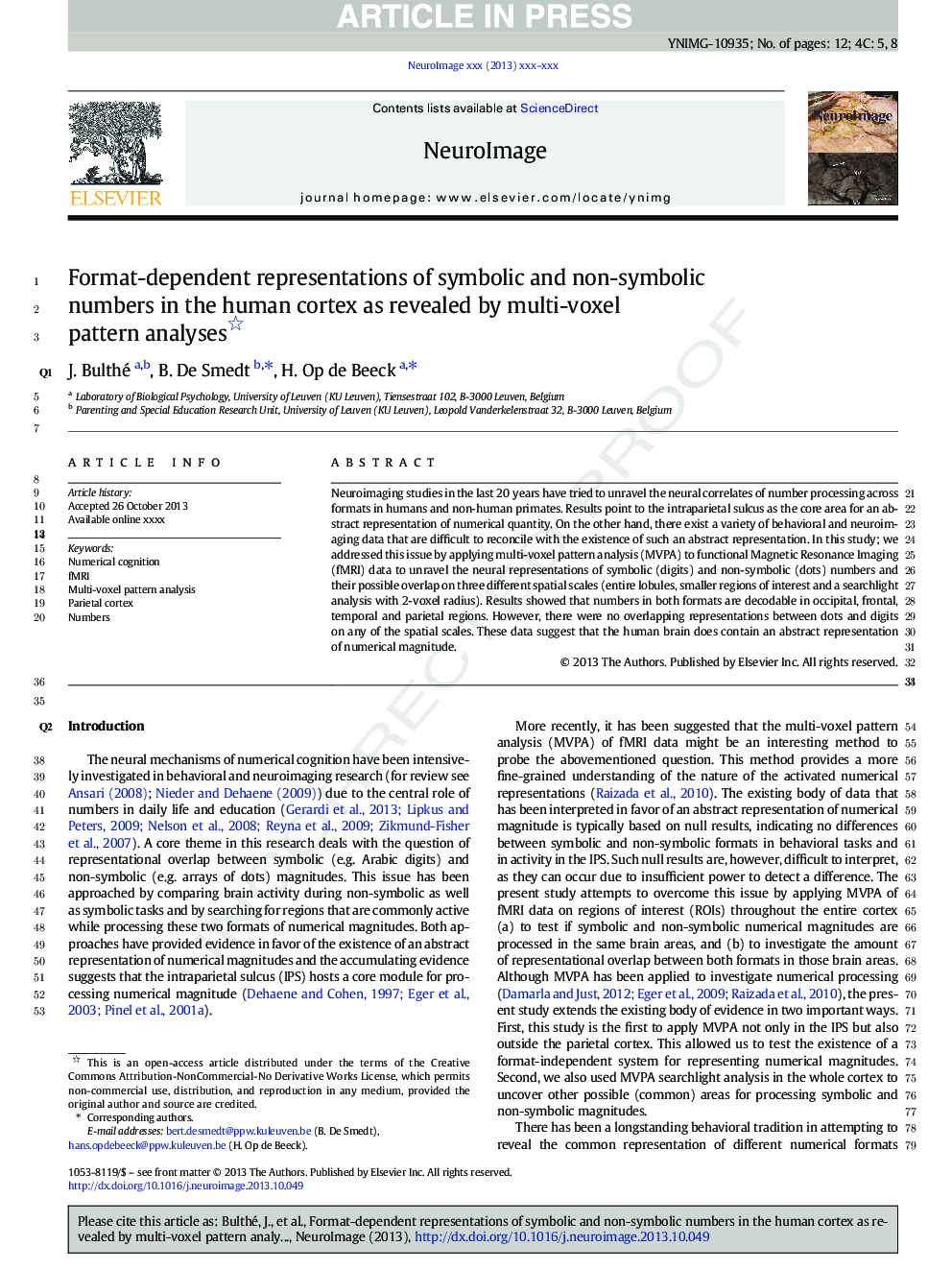| Article ID | Journal | Published Year | Pages | File Type |
|---|---|---|---|---|
| 6027937 | NeuroImage | 2014 | 12 Pages |
Abstract
Neuroimaging studies in the last 20Â years have tried to unravel the neural correlates of number processing across formats in humans and non-human primates. Results point to the intraparietal sulcus as the core area for an abstract representation of numerical quantity. On the other hand, there exist a variety of behavioral and neuroimaging data that are difficult to reconcile with the existence of such an abstract representation. In this study, we addressed this issue by applying multi-voxel pattern analysis (MVPA) to functional Magnetic Resonance Imaging (fMRI) data to unravel the neural representations of symbolic (digits) and non-symbolic (dots) numbers and their possible overlap on three different spatial scales (entire lobules, smaller regions of interest and a searchlight analysis with 2-voxel radius). Results showed that numbers in both formats are decodable in occipital, frontal, temporal and parietal regions. However, there were no overlapping representations between dots and digits on any of the spatial scales. These data suggest that the human brain does not contain an abstract representation of numerical magnitude.
Related Topics
Life Sciences
Neuroscience
Cognitive Neuroscience
Authors
J. Bulthé, B. De Smedt, H.P. Op de Beeck,
